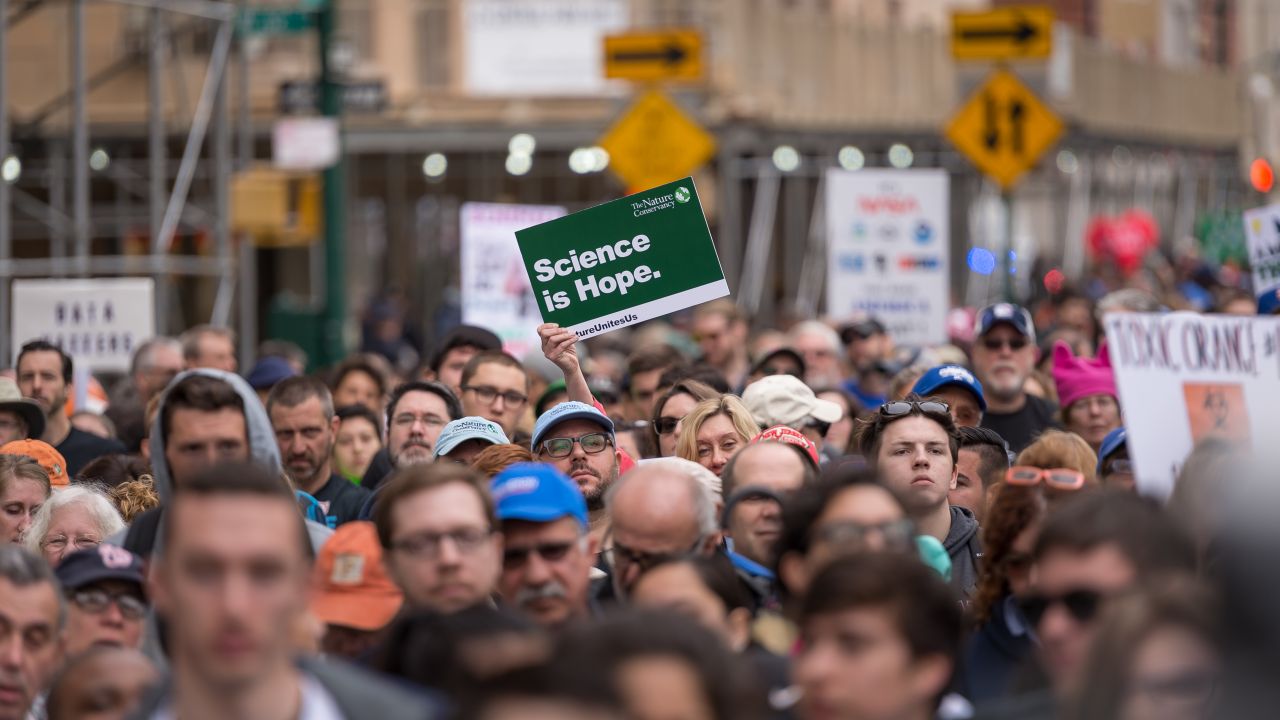
MIDTOWN, NEW YORK, UNITED STATES - 2017/04/22: Several thousand demonstrators rallied on Central Park West near Trump International Hotel before marching on Broadway for New York City's March for Science. The NYC march and others being held simultaneously nationwide were organized as companion events to the March for Science in Washington, D.C. as a protest of the Trump administration's environmental and educational agendas. (Photo by Albin Lohr-Jones/Pacific Press/LightRocket via Getty Images)
This post first appeared at Common Dreams.
Since this New York Magazine article (“The Uninhabitable Earth” by David Wallace-Wells) is getting so much play since it was published on Sunday, I figured I should comment on it, especially as I was interviewed by the author (though not quoted or mentioned).
I have to say that I am not a fan of this sort of doomist framing. It is important to be up front about the risks of unmitigated climate change, and I frequently criticize those who understate the risks. But there is also a danger in overstating the science in a way that presents the problem as unsolvable, and feeds a sense of doom, inevitability and hopelessness.
The article argues that climate change will render the Earth uninhabitable by the end of this century. Extraordinary claims require extraordinary evidence. The article fails to produce it.
The article paints an overly bleak picture by overstating some of the science. It exaggerates for example, the near-term threat of climate “feedbacks” involving the release of frozen methane (the science on this is much more nuanced and doesn’t support the notion of a game-changing, planet-melting methane bomb. It remains unclear how much of this frozen methane can be readily mobilized by projected warming.
Also, I was struck by erroneous statements like this one referencing “satellite data showing the globe warming, since 1998, more than twice as fast as scientists had thought.”
That’s just not true. The study in question simply showed that one particular satellite temperature dataset that had tended to show *less* warming that the other datasets, has now been brought in line with the other temperature data after some problems with that dataset were dealt with.
Ironically, I am a co-author of a recent article in the journal Nature Geoscience (explored in this piece for The Guardian), using that very same new, corrected, satellite dataset, that shows that past climate model simulations slightly “over-predicted” the actual warming during the first decade of the 21st century, likely because of a mis-specification of natural factors like solar variations and volcanic eruptions. Once these are accounted for, the models and observations are pretty much in line — the warming of the globe is pretty much progressing as models predicted. And that is plenty bad enough.
The evidence that climate change is a serious problem that we must contend with now, is overwhelming on its own. There is no need to overstate the evidence, particularly when it feeds a paralyzing narrative of doom and hopelessness.
I’m afraid this latest article does that. That’s too bad. The journalist is clearly a talented one, and this is somewhat of a lost opportunity to objectively inform the discourse over human-caused climate change.
A version of this was originally posted to Facebook but appears here with permission of the author.




